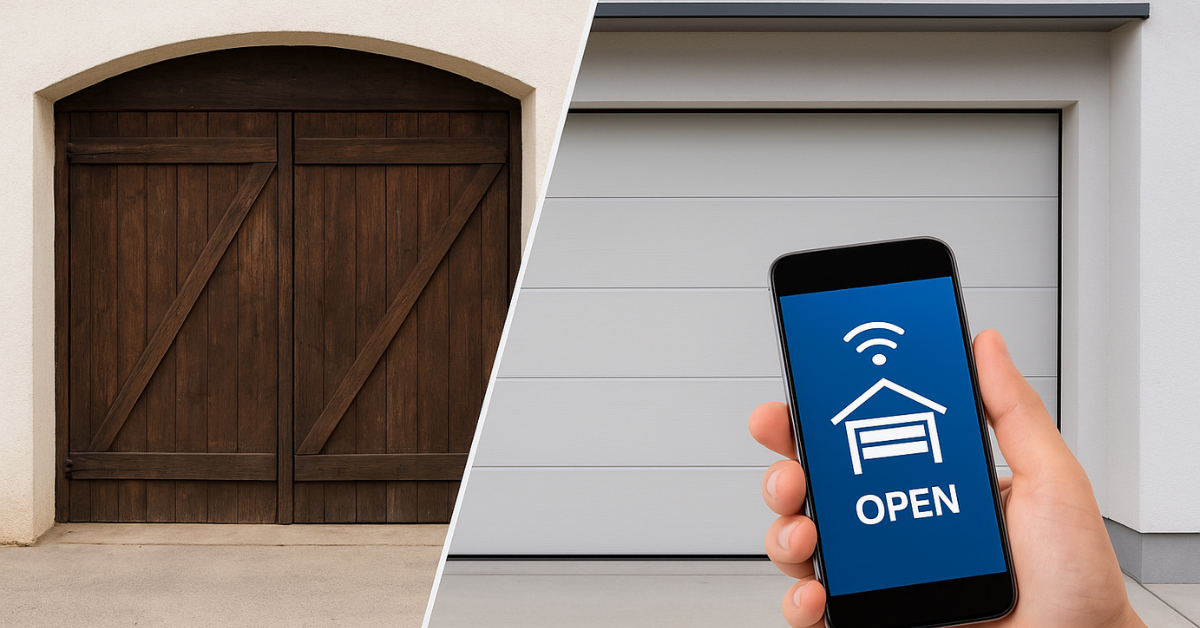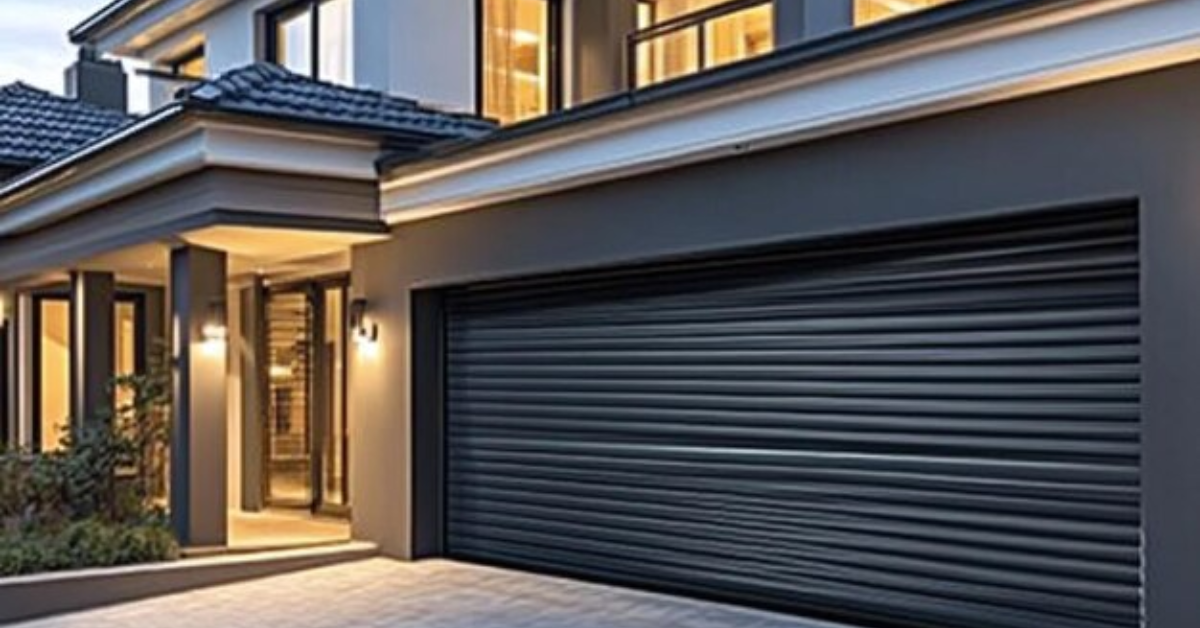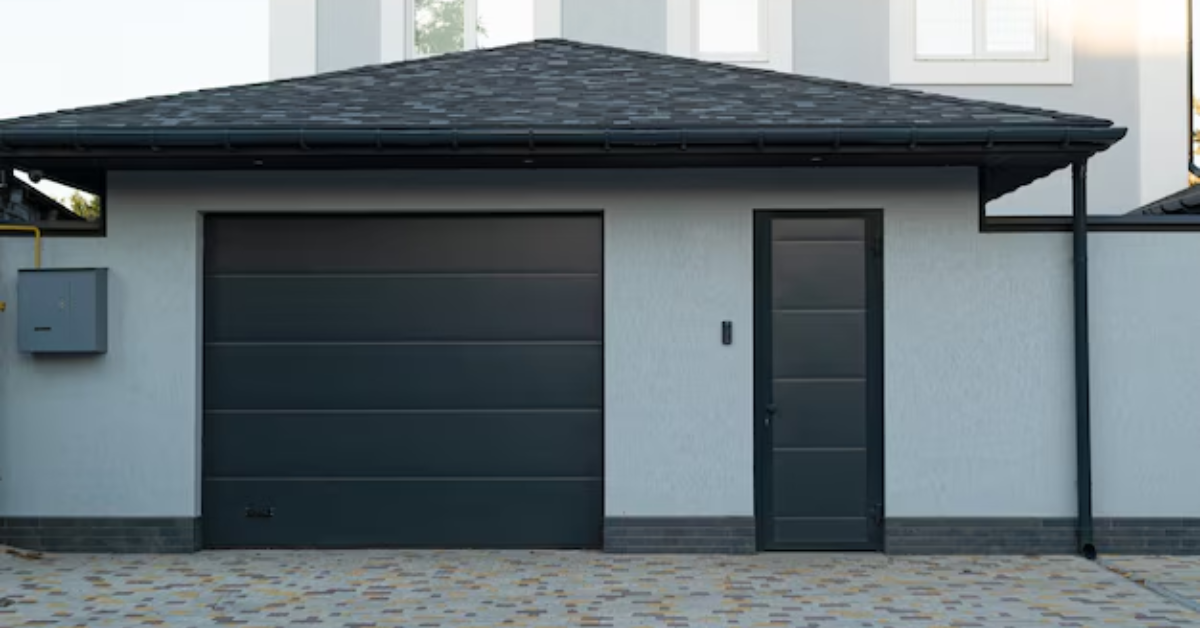From Old to Bold | The Evolution of Modern Garage Doors
Garage doors have come a long way from the simple, heavy wooden panels of the past. Today’s designs are sleek, smart, and energy-efficient — a perfect blend of style and technology. The evolution of modern garage doors is not just about aesthetics but also about improving security, functionality, and convenience for homeowners.
Let’s take a journey through time to see how garage doors evolved from traditional designs to the innovative systems we rely on today.
A Look Back: The Early Days of Garage Doors
In the early 1900s, garages were simply sheds meant to store horse-drawn carriages. The doors were made of solid wood and swung outward like barn doors. These traditional designs were sturdy but not always practical — especially in tight spaces or snowy weather.
As automobiles became more common, homeowners needed better solutions. The first major innovation came in the 1920s, when upward-lifting doors were introduced. Instead of swinging out, they rolled or lifted up, saving space and making it easier to operate.
This was the first big step in the evolution of garage doors, laying the foundation for modern convenience.
The Rise of the Overhead Garage Door
The overhead garage door, invented by C.G. Johnson in 1921, revolutionized home garages. With a simple upward motion, the door disappeared overhead, creating a cleaner look and smoother operation.
A few years later, Johnson’s invention of the electric garage door opener in 1926 made opening the door effortless — a luxury that homeowners quickly embraced.
These two innovations completely transformed the garage door industry, combining practicality with comfort.
The Mid-Century Modern Era: Function Meets Style
By the 1950s and 60s, garage doors were becoming more than just functional parts of a home — they were part of its overall design. Aluminum and steel began to replace wood, offering a sleek, durable, and low-maintenance alternative.
The evolution of modern garage doors during this time also included the introduction of insulated panels, which helped maintain indoor temperatures. Homeowners began to view garage doors as an integral part of their home’s curb appeal.
Automation and Remote Control: The Smart Beginning
In the 1980s, automation took center stage. Garage doors could now be opened with a simple click of a remote control. This was a game-changer for convenience and safety.
Sensors were added to detect obstacles, reducing accidents and improving user confidence. This marked the start of smart garage technology, paving the way for what we see in today’s connected homes.
Modern Innovations: Smart, Stylish, and Secure
Fast forward to today — the evolution of modern garage doors is driven by technology, design, and sustainability. Let’s explore what makes today’s garage doors truly remarkable:
1. Smart Technology Integration
Modern garage doors can connect to Wi-Fi, allowing homeowners to control and monitor them from anywhere using smartphones or voice assistants like Alexa or Google Home. This innovation adds a new layer of convenience and security, especially for those who travel frequently.
2. Enhanced Safety and Security
Advanced locking systems, rolling code technology, and motion sensors have made today’s garage doors more secure than ever. Some models even send alerts if the door is left open — a perfect feature for busy homeowners.
3. Energy Efficiency
Eco-friendly materials and insulated panels are now standard. They help regulate indoor temperatures, reducing energy costs and promoting sustainability — an essential feature for modern homes.
4. Sleek and Custom Designs
From wood-look finishes to minimalist glass panels, modern garage doors come in countless designs. Side-sliding, sectional, and carriage-style doors allow homeowners to match their garage to their home’s architecture.
5. Durability and Low Maintenance
Steel, aluminum, and fiberglass have replaced traditional wood in many designs. These materials resist rust, dents, and harsh weather, ensuring long-lasting performance with minimal upkeep.
The Shift Toward Smart Homes
As smart home technology continues to evolve, garage doors are becoming a key component of connected living. Through apps and sensors, homeowners can now receive notifications, set automated schedules, and even allow deliveries securely inside their garages.
The evolution of modern garage doors now reflects a broader trend — blending comfort, convenience, and innovation to create safer, smarter living spaces.
Why It Matters: More Than Just a Door
Your garage door is one of the most noticeable features of your home. It contributes to security, energy efficiency, and property value. Understanding how it evolved helps homeowners make better choices when upgrading or replacing their doors.
Modern doors not only enhance curb appeal but also integrate technology that supports your daily lifestyle — a far cry from the manual, wooden doors of the past.
Conclusion
The evolution of modern garage doors tells an inspiring story of innovation and progress. From heavy wooden panels to intelligent, energy-efficient designs, garage doors have become smarter, safer, and more stylish than ever.
Whether you’re upgrading to a smart garage door system or simply admiring how far we’ve come, one thing is clear — garage doors have evolved from old to bold, reflecting the spirit of modern living.
FAQs About the Evolution of Garage Doors
Q1: When was the first modern garage door invented?
A: The first overhead garage door was invented by C.G. Johnson in 1921, marking the beginning of modern garage door design.
Q2: What materials are used in modern garage doors?
A: Today’s garage doors are made from materials like steel, aluminum, fiberglass, and composite wood, which are durable and low-maintenance.
Q3: How has technology improved garage doors?
A: Smart technology now allows remote control, automation, and security monitoring via apps and voice assistants.
Q4: Are modern garage doors energy-efficient?
A: Yes. Most modern doors feature insulated panels that help regulate indoor temperatures and reduce energy costs.
Q5: What’s the newest trend in garage door design?
A: Contemporary designs featuring glass panels, side-sliding systems, and smart automation are among the latest innovations.




